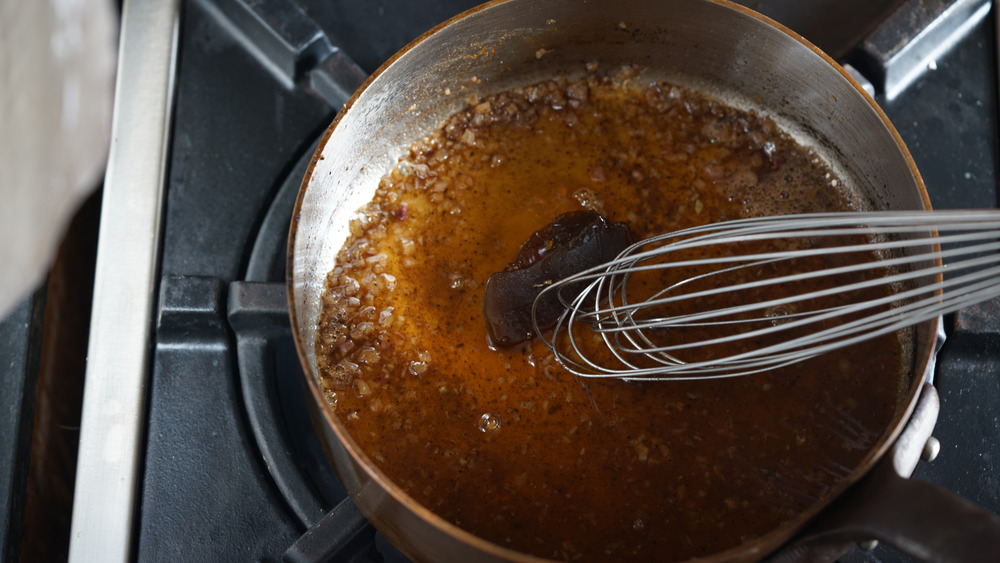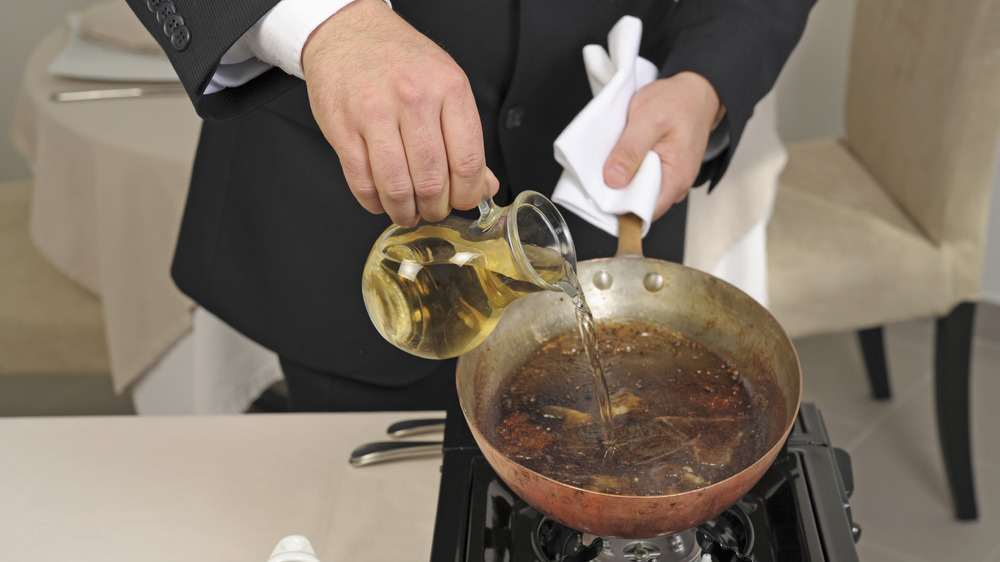You've Been Deglazing Your Pan All Wrong
Deglazing a pan after cooking is, for many of us, something of an afterthought. For some of us, it's not even a thought at all — just the kind of "blah blah whatever" that comes when we're pretty much done with a recipe, like "serves six," "sprinkle with chopped parsley, if desired," or the world's perkiest imperative, "enjoy!" In case you've never even contemplated deglazing and are wondering if it has something to do with bathroom tiles (and, if so, why we're even discussing it on a cooking website), Frank Proto, Director of Culinary Operations at the Institute of Culinary Education, explains that it is, in fact, a cooking term.
As Chef Proto told Mashed, "After you caramelize meat, there's often little bits of meat and caramelized juices stuck to the bottom of the pan," going on to say that this delicious pan gunk even has a name — it's called fond. As in, we couldn't be more fond of the gravies and sauces that use this as a base. The fond, he says, is very tasty and explains that "we use deglazing to get all this flavor" and to make use of it. In order to make the best use of it, though, there are certain steps you need to take in order to make sure you're deglazing the right way.
The best way to deglaze a pan
Chef Proto says the way to deglaze a pan is to first remove the meat, then add a small bit of wine or liquor to the pan to loosen up the fond. If you prefer not to use an alcoholic beverage, The Spruce Eats says you can also use stock, juice, vinegar, or cooking water. Although they do not recommend using plain water as this won't add any flavor, the fond itself has flavor to spare, so even plain water will do in a pinch. If you do choose to use booze, however, you should remove the pan from the heat before adding it. As Proto points out, "a spirit...will ignite," and goes on to recommend "turning the fire off or removing the pot from the heat and then adding your spirit to the pot. Then return the pot to the heat to cook until you no longer smell alcohol."
Once you've added your liquid, take a spatula and scrape up as much of the fond as you can from the pan. Proto says the deglazing liquid may be used as the basis for any sauce you plan to make for your meat or, if you're braising the meat after browning it, you can add it to the braising liquid. He does warn, however, to avoid letting the pan get too hot. "If the fond burns," he says, "it gets bitter and doesn't taste good." In that case, it's better not to deglaze the pan at all.

